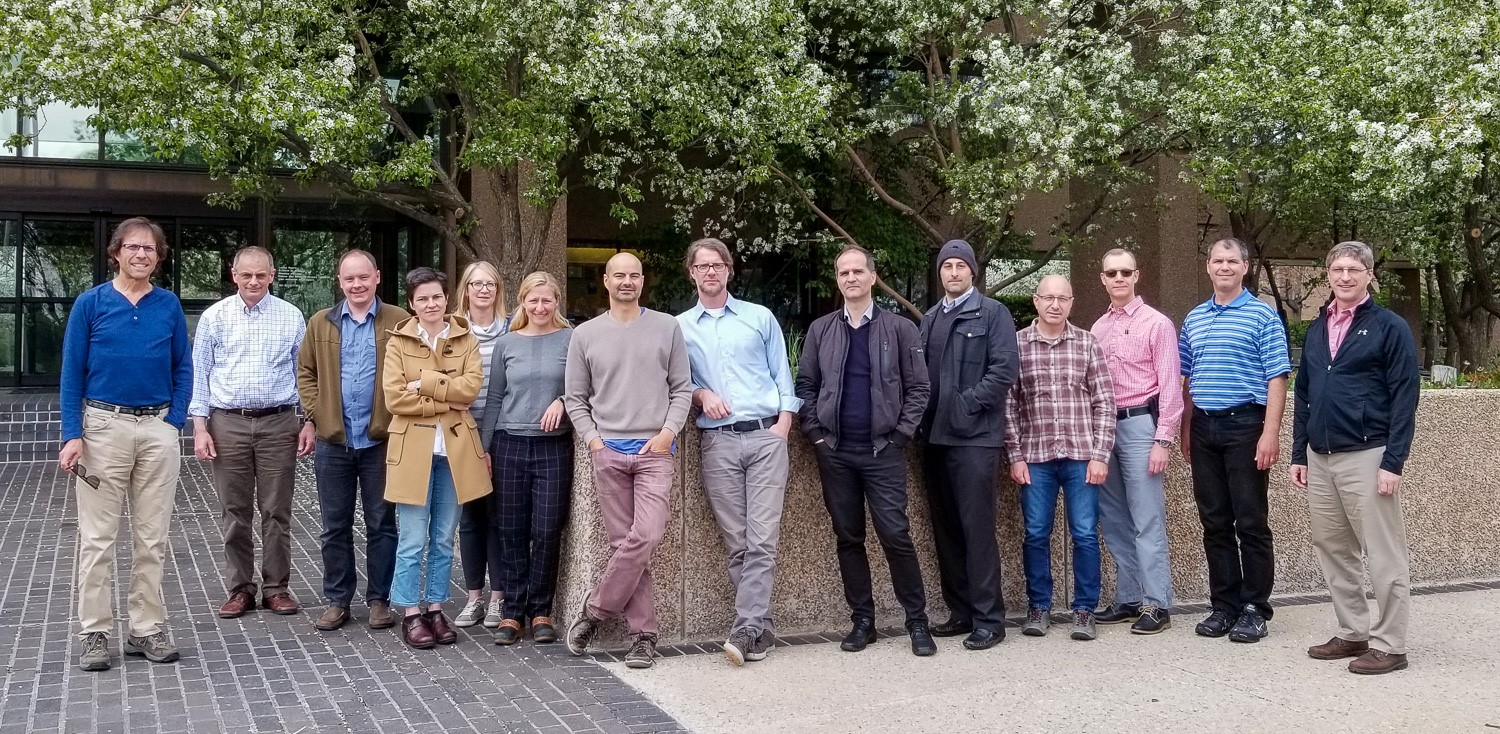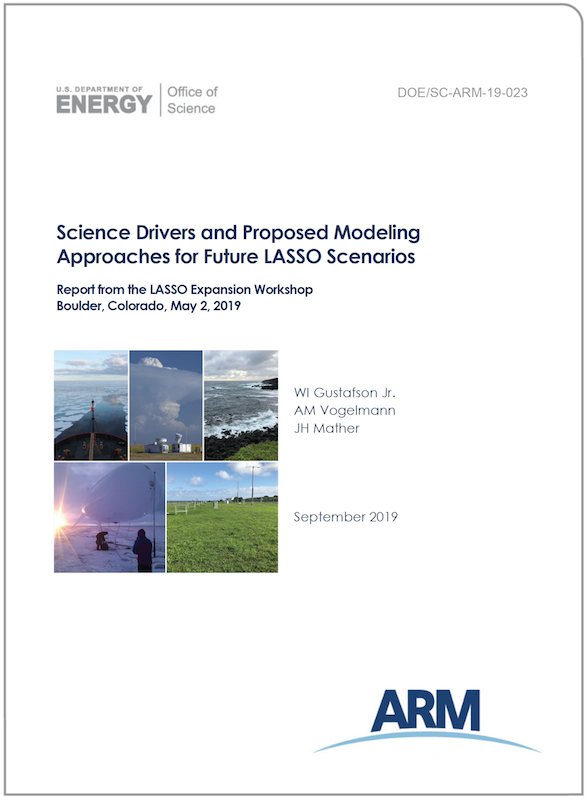Proposed LASSO Expansion Scenarios Get a Deeper Look at Workshop
Published: 31 October 2019
Editor’s note: William Gustafson, principal investigator for the Large-Eddy Simulation (LES) ARM Symbiotic Simulation and Observation (LASSO) workflow, sent in this update.

A workshop earlier this year helped us move closer to making a final decision on the next phase of LASSO.
On May 2, 2019, an international group of 16 scientists gathered to discuss a collection of proposed new scenarios for LASSO. Our goal was to identify strong new scenarios for LASSO to expand beyond shallow convection at ARM’s Southern Great Plains atmospheric observatory. Hugh Morrison graciously hosted us at the National Center for Atmospheric Research in Boulder, Colorado.
A request for new ideas had been submitted via a white paper call in January, which provided the foundation for the workshop.
The response to the call represented a strong community response with multiple authors on all the white papers and more than a dozen authors on two of the papers. Instead of submitting multiple, competing ideas, the white paper teams joined together and provided well-thought-out ideas that would benefit wide contingencies of ARM users.
The workshop participants were a selection of experts representing each white paper topic, ARM’s infrastructure, and data assimilation. Attendees were:
- Scott Giangrande and Andy Vogelmann, Brookhaven National Laboratory
- Pavlos Kollias, Brookhaven National Laboratory and Stony Brook University
- Richard Forbes, European Centre for Medium-Range Weather Forecasts
- Ann Fridlind, NASA Goddard Institute for Space Studies
- Hugh Morrison and Glen Romine, National Center for Atmospheric Research
- Graham Feingold, Matthew Shupe, and Dave Turner, National Oceanic and Atmospheric Administration/Earth System Research Laboratory
- Jennifer Comstock, William Gustafson, Jim Mather, and Adam Varble, Pacific Northwest National Laboratory
- Erika Roesler, Sandia National Laboratories
- Rob Wood, University of Washington.

Mather (ARM technical director), Vogelmann (LASSO co-principal investigator), and I organized the meeting and took turns chairing the discussion sessions.
We started the day with an overview of the current LASSO shallow convection scenario with an emphasis on what it took to develop this scenario, what is currently available, and what we have learned through the process. We then sequentially focused on each proposed scenario:
- maritime clouds at the Eastern North Atlantic atmospheric observatory
- deep convection during the Cloud, Aerosol, and Complex Terrain Interactions (CACTI) field campaign
- clear-air turbulence at the Southern Great Plains observatory
- arctic clouds during the Multidisciplinary Drifting Observatory for the Study of Arctic Climate (MOSAiC) field campaign.
Each scenario had a 20-minute presentation followed by extensive discussion. We focused particularly on the science drivers motivating why ARM should implement the scenario, the availability and readiness of required measurements, and the viability of modeling the processes needed for addressing the science drivers. As organizers, we were pleased to see the group promote positive aspects of all the scenarios and not fall into a competition for which scenario would win. This resulted in a very productive meeting in which we gathered a lot of information that will inform ARM’s development of LASSO over the coming years.

In the end, we found strong motivations for ARM to implement all four of the scenarios. In Mather’s opening comments for the meeting, he noted that a great result of the shallow convection scenario has been a focusing of effort across many parts of ARM to make LASSO a success. This has resulted in new and improved data products, a heightened awareness of data quality for the suite of measurements used by LASSO, an openness to trying new methodologies for users to interact and download data, and a group of scientists producing exciting results based on the LASSO data bundles.
By expanding LASSO to new scenarios, we hope to bring this symbiotic response to additional parts of ARM. Our goal is for LASSO to strengthen ARM’s observational capabilities and to draw more users to ARM by increasing awareness of the types of observations ARM has to offer around various types of atmospheric processes.
More details, including the full text of the submitted white papers, can be found in the recently released ARM technical report documenting the workshop:
Gustafson, WI, AM Vogelmann, and JH Mather. 2019. Science drivers and proposed modeling approaches for future LASSO scenarios, report from the LASSO Expansion Workshop. DOE Atmospheric Radiation Measurement (ARM) user facility. DOE/SC-ARM-19-023, https://doi.org/10.2172/1569273.
We are nearing a final decision and will share the plan with you soon. In the meantime, questions and thoughts about LASSO and its expansion can be directed to Vogelmann and me at lasso@arm.gov. We are always excited to hear about how the LASSO data bundles are getting used!
Check out the blog series on possible expansion scenarios.
Keep up with the Atmospheric Observer
Updates on ARM news, events, and opportunities delivered to your inbox
ARM User Profile
ARM welcomes users from all institutions and nations. A free ARM user account is needed to access ARM data.


















